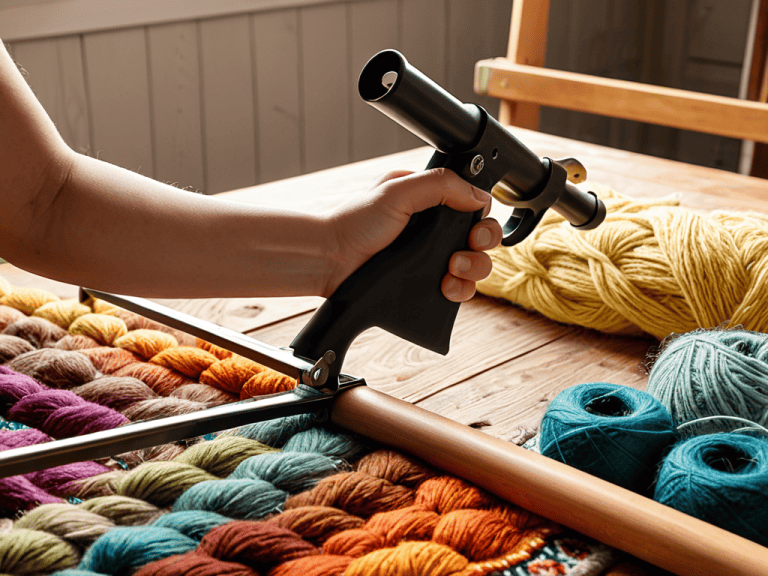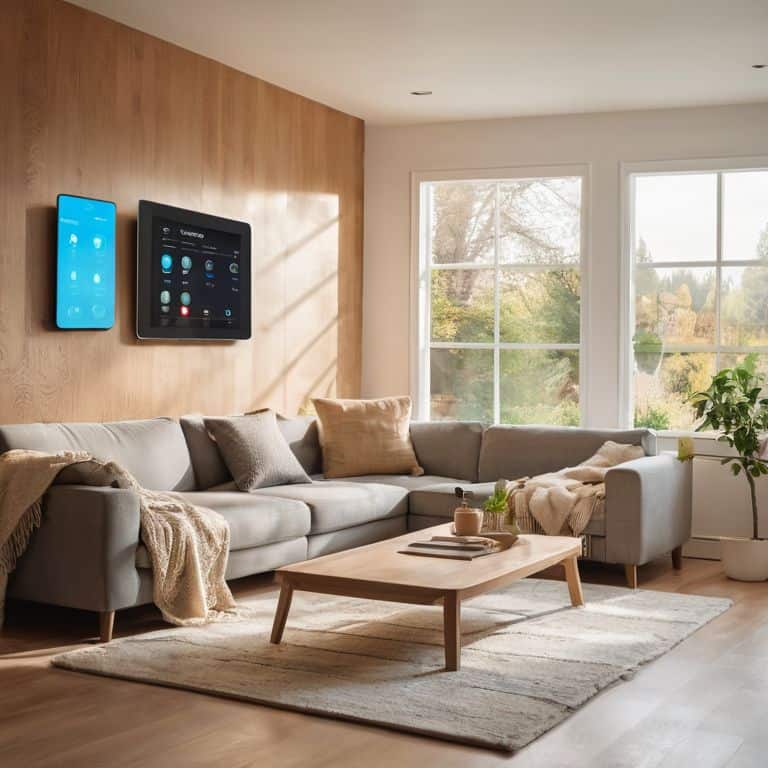I still remember the first time I tried to tackle a simple arduino project to make an led blink. I was a newbie, eager to dive into the world of DIY electronics, but every tutorial I found seemed to assume I already knew the basics. The truth is, most guides out there are filled with jargon and overly complicated steps, making it tough for beginners to get started. But here’s the thing: it doesn’t have to be that way. With the right approach, you can have an LED blinking in no time, and it’s a great way to get your feet wet with Arduino.
In this article, I’ll walk you through a step-by-step guide to creating your own blinking LED masterpiece with Arduino. I’ll show you how to avoid common pitfalls and troubleshoot issues that might arise. You’ll learn how to connect the LED, write the code, and upload it to your Arduino board. My goal is to empower you with the knowledge and confidence to take on more complex projects, and to make you realize that DIY electronics is fun and rewarding. By the end of this guide, you’ll have a solid understanding of the basics and be ready to move on to more advanced projects, all while having a blast voiding warranties and pushing the limits of what’s possible with Arduino.
Table of Contents
Guide Overview: What You'll Need

Total Time: 30 minutes to 1 hour
Estimated Cost: $10 – $20
Difficulty Level: Easy
Tools Required
- Breadboard (for circuit assembly)
- Jumper Wires (various colors)
- USB Cable (for Arduino connection)
- Computer (for uploading code)
Supplies & Materials
- Arduino Board (e.g., Arduino Uno)
- LED Light (single color)
- Resistor (220 ohm or suitable for LED)
- Power Source (e.g., USB connection or battery)
Step-by-Step Instructions
- 1. First, let’s get our hands on the necessary components for this project. You’ll need an Arduino board (I’m using the Arduino Uno for this example), a breadboard, some jumper wires, a 220-ohm resistor, and of course, an LED. Don’t worry if you’re not familiar with these components; we’ll go through each step together. The most important thing is to have fun and be willing to void that warranty.
- 2. Next, we need to set up our Arduino development environment. If you haven’t already, download and install the Arduino IDE from the official Arduino website. It’s available for Windows, macOS, and Linux, so regardless of your operating system, you’re covered. Once installed, launch the IDE, and let’s get familiar with the interface. You’ll notice it’s pretty intuitive, with options to create, edit, and upload your sketches (that’s what Arduino programs are called). We’ll be using this interface to bring our LED blinking project to life by writing a simple sketch.
- 3. Now, let’s connect our LED to the breadboard. This is where things can get a bit tricky, but don’t worry, I’ve got you covered. Take your LED and insert the longer leg (the anode) into one of the rows on the breadboard. Then, take the shorter leg (the cathode) and insert it into another row, but make sure these rows are not connected to each other. Next, take one end of the 220-ohm resistor and connect it to the same row as the cathode of the LED. The other end of the resistor will connect to one of the Arduino’s digital pins. We’re using pin 13 for this project because it’s conveniently located and has a built-in resistor, but we’re adding an external one to be safe. This setup is crucial for our LED blinking circuit to work.
- 4. With our hardware setup, it’s time to write the code. Open a new sketch in the Arduino IDE, and let’s start with the basics. We need to declare the pin we’re using (pin 13) as an output. We do this in the `setup()` function. Type `pinMode(13, OUTPUT);` inside the `setup()` brackets. Then, in the `loop()` function, we’ll use `digitalWrite(13, HIGH);` to turn the LED on and `digitalWrite(13, LOW);` to turn it off. We’ll also use the `delay()` function to set the blinking speed. A delay of 1000 milliseconds (or 1 second) for both on and off states will give us a nice, slow blink.
- 5. Before we upload our sketch to the Arduino, let’s make sure our code looks something like this:
“`
void setup() {
pinMode(13, OUTPUT);
} - void loop() {
digitalWrite(13, HIGH);
delay(1000);
digitalWrite(13, LOW);
delay(1000);
}
“`
This code is the heart of our project, and it’s what makes the LED blink. If you’re new to coding, don’t worry if this seems confusing at first; it’s actually pretty straightforward once you understand what each line does. - 6. Now, it’s time to upload our sketch to the Arduino. Connect your Arduino board to your computer using a USB cable. Then, in the Arduino IDE, select the correct board and port from the Tools menu. With everything set, click the upload button or press Ctrl+U (or Cmd+U on a Mac). You’ll see the TX and RX LEDs on your Arduino blinking as it uploads the sketch. Once the upload is complete, our LED should start blinking, and that’s when the magic happens!
- 7. Finally, let’s troubleshoot any potential issues. If your LED doesn’t blink, check your connections first. Make sure the LED is properly seated in the breadboard and that the resistor is connected correctly. Also, verify that you’ve selected the right board and port in the Arduino IDE before uploading the sketch. Sometimes, it’s the simple things that can cause issues, so don’t be afraid to double-check your work. If you’re still having trouble, feel free to reach out or comment below. I’m always here to help you get your project up and running.
Blinking Led Masterpiece

Now that we’ve got our LED blinking, let’s take it to the next level. One of the coolest things about Arduino LED blink code is how easily you can modify it to create different effects. For example, you can change the blink rate or add more LEDs to create a sequence. If you’re new to Arduino, this is a great way to get started with basic electronics for Arduino projects.
As you work on your project, don’t be afraid to experiment and try new things. That’s what DIY is all about, right? Using a breadboard with Arduino can seem intimidating at first, but trust me, it’s a game-changer. It allows you to prototype and test your ideas quickly and easily. Plus, it’s a great way to learn about introduction to Arduino programming without breaking the bank.
Remember, the key to mastering Arduino is to start with simple Arduino projects for beginners and gradually work your way up. Don’t be discouraged if your project doesn’t work as expected at first. Troubleshooting is all part of the process, and it’s a great way to learn. With an Arduino Uno starter kit, you’ve got everything you need to get started and take your projects to the next level.
Arduino Uno Starter Kit
Now that we’ve brought our Blinking LED Masterpiece to life, let’s talk about the brain behind the operation – the Arduino Uno. I’m a huge fan of the official Arduino Uno Starter Kit, it’s a treasure trove of goodies to get you started on your DIY journey. The kit usually includes the Arduino Uno board, a USB cable, a breadboard, jumper wires, and a plethora of sensors and components to experiment with.
The Arduino Uno Starter Kit is perfect for beginners and seasoned makers alike, offering a wide range of projects to tackle, from simple circuits to complex robotics. With this kit, you’ll be able to take your Blinking LED Masterpiece to the next level, adding sensors, motors, and more to create something truly unique. Trust me, once you start tinkering with the Arduino Uno, you’ll be hooked – it’s a gateway to a world of limitless possibilities and creative freedom.
Basic Electronics Tricks
Now that we’ve got our LED blinking like a pro, let’s dive into some basic electronics tricks to take our project to the next level. One of my favorite hacks is using a resistor to limit the current flowing to the LED. This not only prevents it from burning out but also allows us to tweak the brightness to our liking. I like to think of it as fine-tuning a guitar amp – you gotta find that sweet spot where everything sounds just right.
By experimenting with different resistor values, we can create a variety of effects, from a soft glow to a blinding flash. It’s amazing how such a simple component can add so much depth to our project. And the best part? It’s incredibly easy to implement, even for a beginner. With just a few tweaks, we can turn our blinking LED into a truly mesmerizing display.
5 Essential Tips to Take Your Blinking LED Game to the Next Level

- Use a breadboard to prototype your circuit before soldering, it’s a total game-changer for making changes on the fly
- Select the right resistor for your LED, don’t be afraid to experiment with different values to get the perfect brightness
- Keep your Arduino code organized, use comments and whitespace to make it easy to read and debug, trust me it’s worth it
- Experiment with different blink patterns, from simple on/off to more complex sequences, it’s amazing what you can do with a few lines of code
- Don’t be afraid to push the limits of your LED, try different voltages and currents to see what’s possible, just remember to keep it safe and within specs
Key Takeaways from Our Blinking LED Adventure
By following this simple Arduino project, you can create a blinking LED masterpiece that’s not only fun to build, but also a great introduction to the world of DIY electronics and microcontrollers
With the right tools, such as the Arduino Uno Starter Kit, and some basic electronics tricks up your sleeve, you can take your projects to the next level and start experimenting with more complex circuits and designs
Remember, the goal of this project is not just to make an LED blink, but to empower you with the knowledge and confidence to void some warranties, get your hands dirty, and start building, repairing, and improving your own technology
The Spark of Creation
With a simple Arduino project like a blinking LED, we’re not just coding, we’re igniting a passion for innovation that can lead to a lifetime of tinkering, inventing, and pushing the boundaries of what’s possible.
Frankie Miller
Wrapping Up Your Arduino Adventure
As we conclude this simple Arduino project to make an LED blink, let’s recap the key points: we started with an Arduino Uno Starter Kit, learned some basic electronics tricks, and then dove into the step-by-step instructions to bring our blinking LED masterpiece to life. Throughout this journey, I hope you’ve not only gained hands-on experience with Arduino but also developed a mindset that encourages you to void warranties and explore the true potential of the technology around you.
Now that you’ve completed this project, remember that the world of DIY tech is vast and waiting to be explored. Don’t be afraid to experiment, to try new things, and to push the boundaries of what’s possible. As you move forward, keep in mind that empowering your inner maker is about more than just building projects – it’s about embracing a philosophy that values creativity, self-reliance, and the thrill of bringing your ideas to life.
Frequently Asked Questions
What are the minimum components required to make an LED blink using Arduino?
To get that LED blinking, you’ll need just a few essentials: an Arduino board, an LED, a resistor, and some jumper wires. Don’t worry, it’s a super minimal setup – I like to call it “blinkin’ bare bones”! With these basics, we can get that LED shining in no time.
Can I use any other type of microcontroller or is Arduino Uno the only option for this project?
Not at all, my friend! While I love the Arduino Uno, you can definitely use other microcontrollers like Raspberry Pi Pico or ESP32 for this blinking LED project. Just keep in mind you’ll need to tweak the code and possibly the circuitry to match your chosen board’s specs.
How do I troubleshoot if my LED doesn't blink after following the step-by-step instructions?
Whoa, no blink? No worries! Let’s debug this. Check your wiring, ensure the LED’s polarized correctly, and verify your Arduino code. If still no go, try swapping the LED or checking for loose connections. I’ve been there, and it’s usually something simple. Don’t fret, we’ll get that LED blinking in no time!









